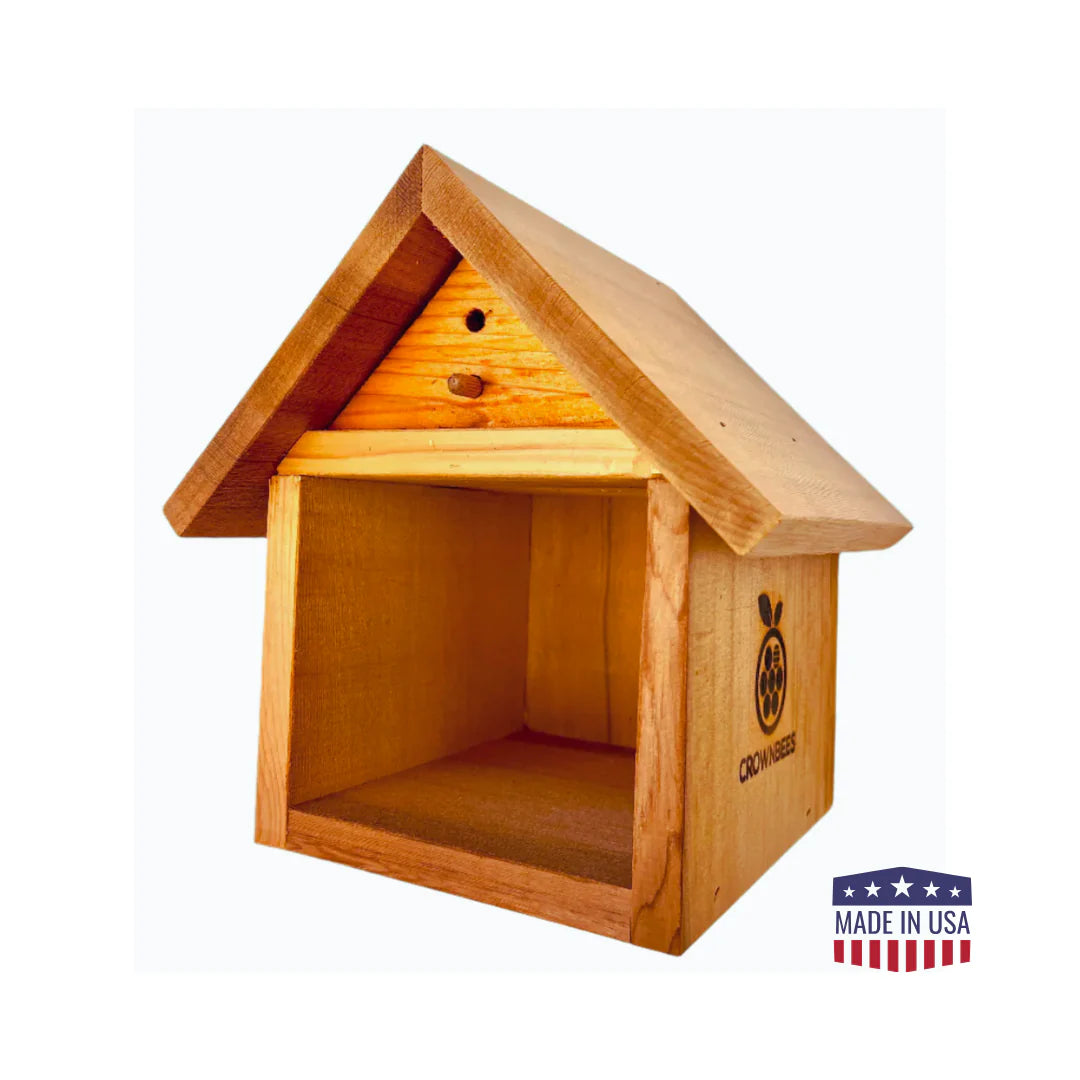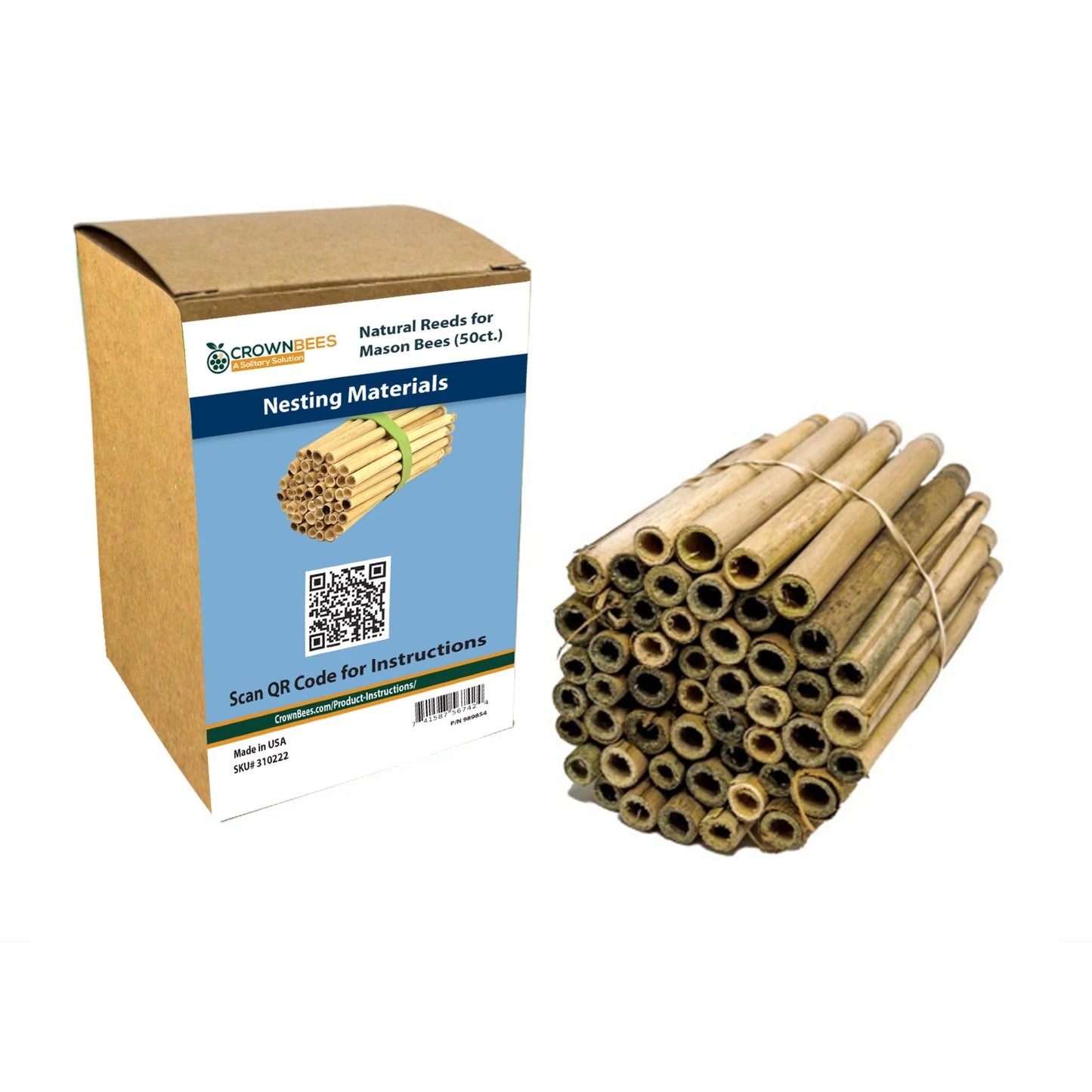Creating a Safe & Healthy Home for Your Bees
Building and setting up bee houses is a wonderful way to support nesting bees and protect pollinators. Before human-made houses, bees nested in holes that naturally broke down over time. Modern bee houses keep nesting holes dry and intact, which can allow pests to linger year after year. Thankfully, with a little care and attention, you can create a safe haven for bees while reducing pests and disease.
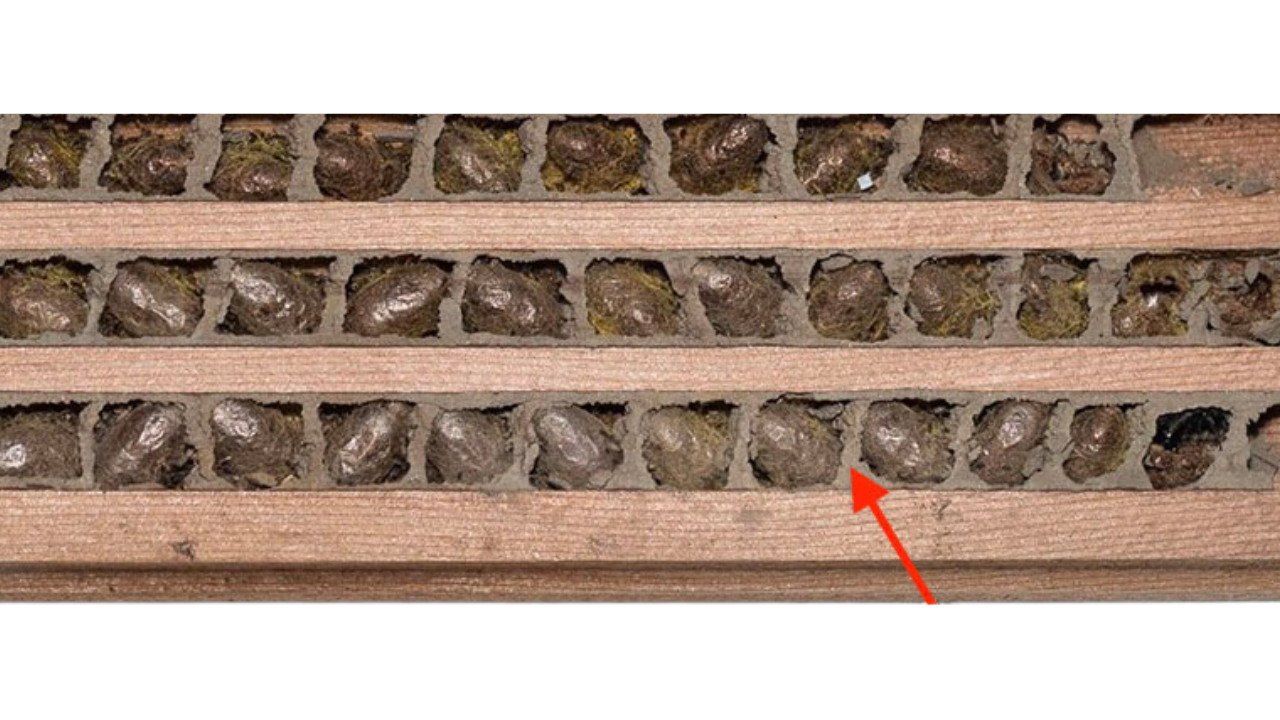
Not all eggs will hatch, and some larvae may not reach maturity. When this happens, you might find partial or complete pollen loaves in the nesting materials. These are usually yellow or orange with a sticky texture.

Female Houdini flies lay their eggs inside a Mason bee’s nest before the bee can seal it. The fly larvae hatch quickly and consume the pollen loaf, starving the Mason bee larvae before they have a chance to grow.
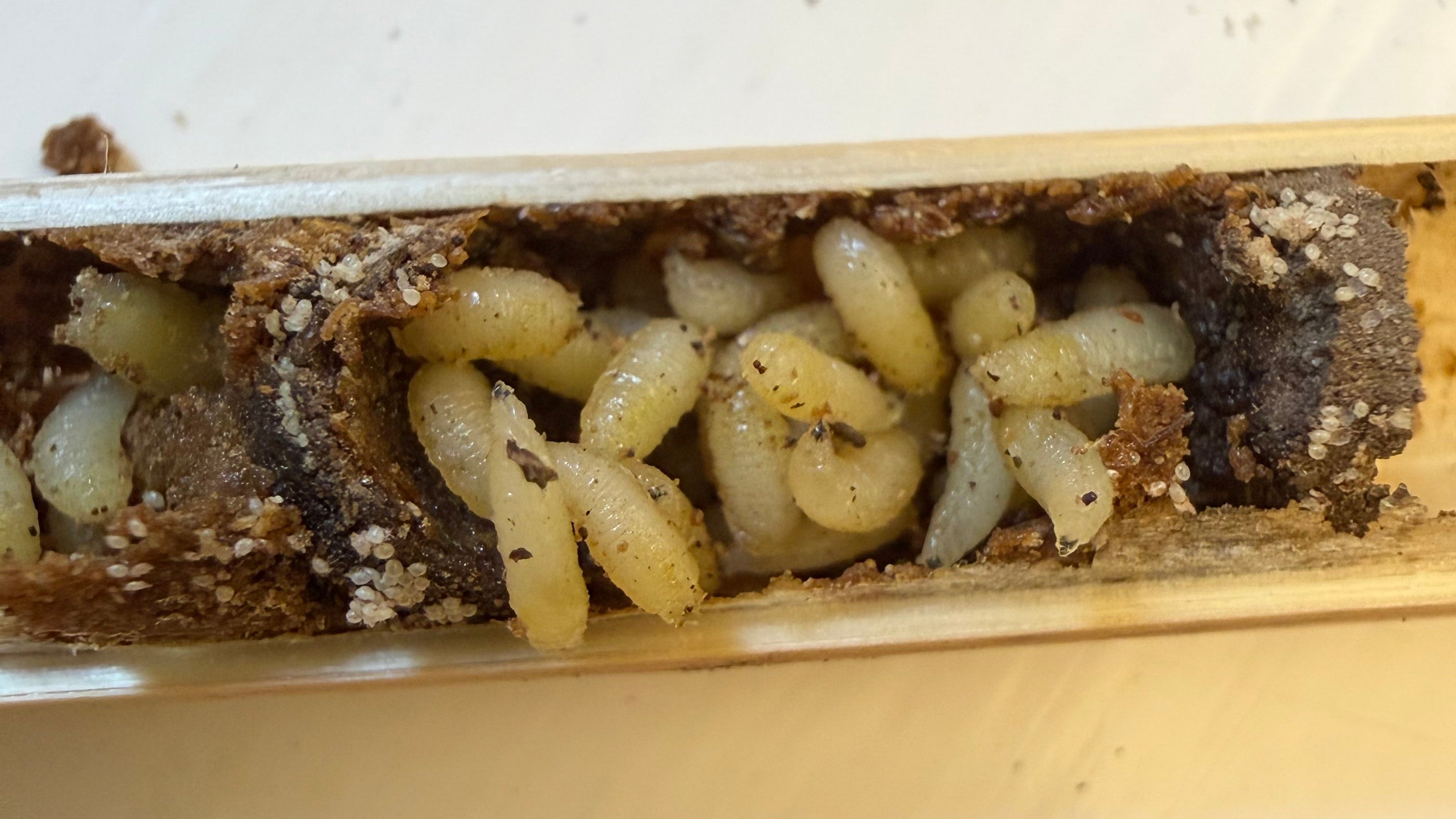
- Use nesting materials that open: This allows for easy cocoon harvesting, which is key to controlling Houdini flies.
- Harvest cocoons in the fall: Remove any pests, including Houdini fly larvae, which appear as sticky white clusters inside brood cells, often with curly orange or brown frass (poop).
- Place unopened nesting materials in a BeeGuard Bag: If you can't open your nesting materials, store them in a BeeGuard Bag. Release emerging Mason bees daily and kill any adult Houdini flies inside the bag.
- Kill Houdini flies on sight: A low- to medium-powered vacuum can help reduce their numbers around your nests.
- Buy bees from a trusted source: Crown Bees inspects all cocoons to ensure they are pest-free. Before purchasing, ask providers about how they harvest and inspect their cocoons.
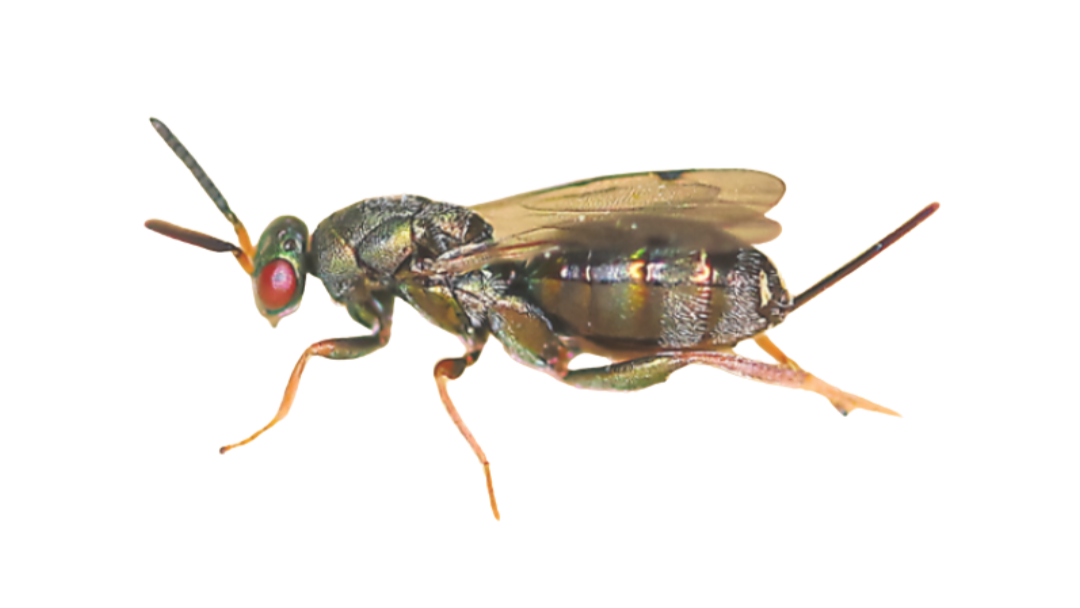
Chalcid wasps are some of the most destructive parasites of Mason bees. Female wasps take advantage of small openings or weak spots in nesting materials. Using a needle-like ovipositor, they paralyze bee larvae and lay about 10 eggs inside the cocoon. The wasp larvae then feed on the bee, developing inside the cocoon. Once mature, the adult wasps chew a small hole through the cocoon and nesting material to emerge. Because they reproduce quickly, multiple generations can occur in a single season.
- Use double-walled nesting materials with closed backs: Thin, single-walled tubes or open-backed materials are easily penetrated by Chalcid wasps.
- Remove completed nests at the end of the Mason bee season: Store them in a BeeGuard Bag or other breathable mesh bag to protect against parasitic wasps.
- Monitor for Mono wasps: These wasps are most active late in the season. Check your BeeGuard Bag regularly and eliminate any adult wasps that emerge.
- Hand-sort cocoons: Carefully inspect small batches of cocoons to identify and remove Chalcid wasps. Parasitized cocoons will feel softer and seem almost empty when lightly squeezed.
- Store questionable cocoons in a breathable, transparent container: Check frequently for any emerging parasitic wasps.
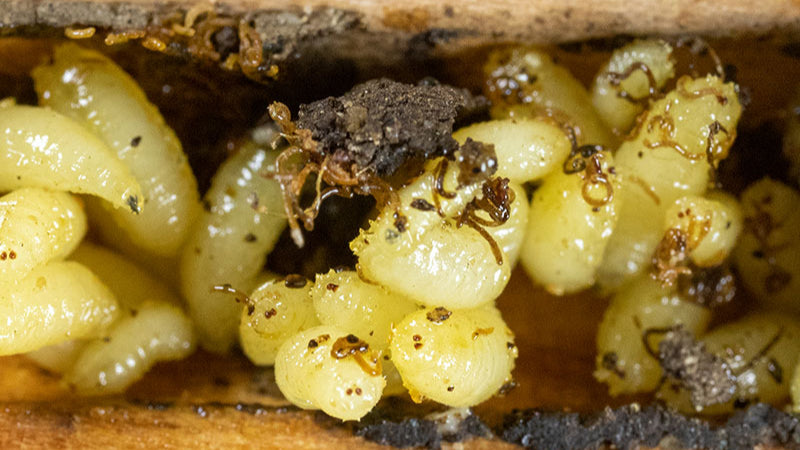
Houdini fly larvae hatch quickly and consume the pollen loaf before the Mason bee larvae can feed, leading to starvation.
- Harvest Mason bee cocoons in the fall to inspect for Houdini fly larvae. Remove and destroy any maggots you find.
- Use openable nesting materials to allow for proper cocoon harvesting and pest removal.
- If using bamboo tubes or drilled wood blocks, place them in a BeeGuard Bag over winter. Release emerging Mason bees daily in the spring and eliminate any adult Houdini flies.
- Regularly inspect your bee house and kill any adult Houdini flies you see near the nesting materials. A low- to medium-powered vacuum can help remove them from the area.
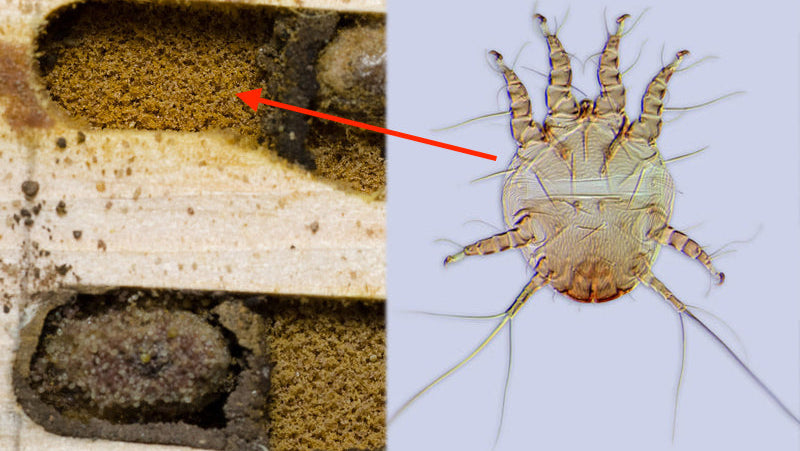
Pollen mites cannot break through the mud walls of sealed nest cells, but they hitch a ride on newly emerged bees as they crawl through infested nesting cavities. These bees unknowingly transport mites to new nest cells and flowers during foraging and nesting. Without intervention, pollen mites can quickly spread, weakening or wiping out an entire bee population.
- Harvest Mason bee cocoons in the fall and inspect them for signs of pollen mites. This is the most effective way to control infestations.
- Do not reuse nesting tubes, as pollen mites can easily spread. Instead, use nesting materials that can be opened and cleaned, such as reusable wood trays.
- Avoid drilled blocks of wood, as they cannot be cleaned properly. These materials also trap moisture, increasing the risk of both pollen mites and fungal diseases like chalkbrood.
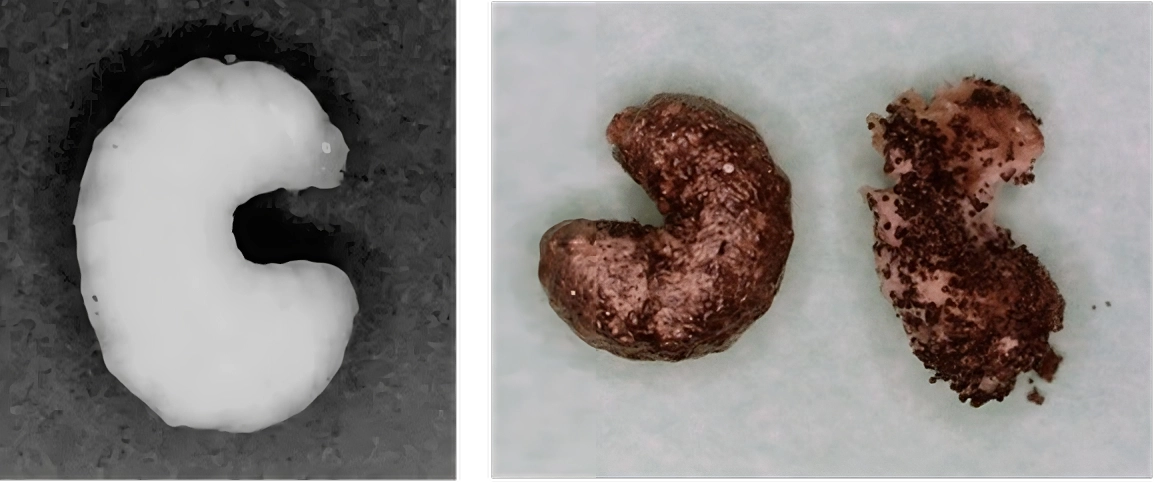
When new adult bees emerge in the following season, they crawl through infected cells, picking up spores that cling to their bodies. These spores contaminate flowers and nesting materials, infecting a new generation of bees. As a result, many developing bees die before reaching adulthood, reducing the overall bee population.
Harvest Mason bee cocoons in the fall to remove infected cells before new bees emerge. Open the nesting materials, remove healthy cocoons, and discard any dead larvae (chalkbrood cadavers) to prevent further contamination. Be careful not to let healthy cocoons touch infected ones.
Clean cocoons and nesting materials to eliminate spores:
- Recommended: Wash cocoons with cool water, pat dry, and spritz with CleanBee solution (a safe bleach alternative).
- Alternative: Rinse cocoons with cool water and a mild bleach solution (1 tsp bleach per 1 cup water), then rinse again with clean water and pat dry.
Replace or clean nesting materials before the next season. Avoid drilled blocks of wood or other nesting materials that cannot be properly opened and sanitized.
Not all bees finish a complete nesting hole. If the partially filled nesting hole is left outside for the whole season, another bee or beneficial wasp might use it! In the spring, the inside bee tunnels out, killing all later season insects, or can't make it out and die.
If there are no nesting holes available, bees will find any cavity to fill. Have more available next spring.
White larvae are either wild bees or beneficial wasps. Read more here.
